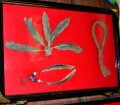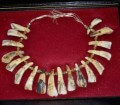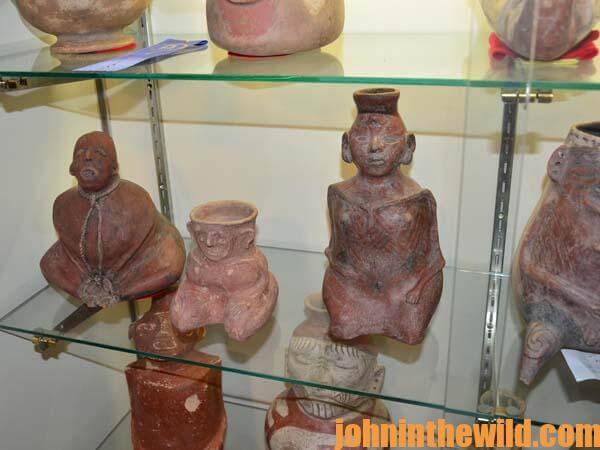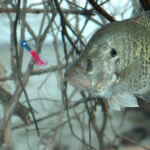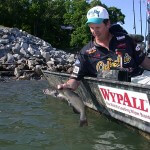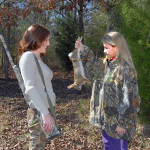John’s Note: Most people think of American frontiersmen as the fur traders, pioneers and European settlers who came to this country. But the true frontiersmen were the people who lived here long before Columbus ever discovered America. These civilizations hunted, farmed, lived, died, were buried and were lost or abandoned. If a people are to know their future, they must learn and understand their past. The treasure hunter who helps a people find and know this past performs a service for the early people, their descendants and all mankind. Many outdoorsmen enjoy studying early times and using their metal detectors. Always be sure to check state and federal regulations associated with treasure hunting. In 2013, I met 74-year old Charles Griffin of Shelby County, Alabama, who had been hunting arrowheads and Indian artifacts for 67 years. Like many youngsters with no TV or sports teams to play on in the country, Griffin had been and still is fascinated with the stone tools, arrowheads and pottery he found on his family’s 100-acre farm that his great, great grandfather settled in 1816 after fighting with General Andrew Jackson in the Indian Wars. http://youtu.be/iopUtnpGsKI.
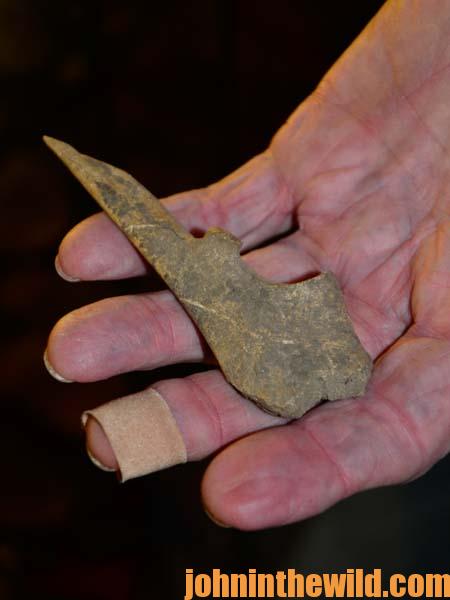 Charles Griffin’s personal collection includes pottery, stone tools, art and jewelry with some items dating back to 12,000 B.C. In his collection is a necklace many warring tribes wore – the top half of a human skull with holes drilled in it to wear around the neck, as well as buffalo bones found in west Tennessee where once buffalo lived, as well as in many other parts of the South.
Charles Griffin’s personal collection includes pottery, stone tools, art and jewelry with some items dating back to 12,000 B.C. In his collection is a necklace many warring tribes wore – the top half of a human skull with holes drilled in it to wear around the neck, as well as buffalo bones found in west Tennessee where once buffalo lived, as well as in many other parts of the South.
• Bone Tools http://youtu.be/RQnFZUIUkeg
Early Americans used a wide variety of different implements. Bone tools, which today are rare, were made from the animals they killed. They hollowed out deer antler tips to use as atlatl points, arrow points and spear heads. Small thin deer bones became needles for sewing animal skin clothing. A deer’s brow tine became an awl to punch holes into leather. The large deer leg bones called beamers were shaved down on one edge and used as a drawing knife to shave the fat and the meat off animal skins.
• Boat Building http://youtu.be/nhXcU55qvNc
Because most of these early people lived near water, they needed boats to bring meat back to camp if they went on hunting and fishing trips. “These people fashioned dugout canoes from the trunks of trees,” Griffin says. “They built controlled fires under and beside the logs to burn away a portion of the wood, to make a cavity in the log. Then they used stone tools to chip away the burnt wood with stone awls and adzes (a tool similar to an axe but with the head mounted perpendicular to the handle) and hollow out these tree trunks.” Many people mistakenly identify these adzes as tomahawks, but the adzes also broke animal bones, dug holes and could be used like hammers.
• The Economy of the Beads http://youtu.be/QeJOshZWLfY
When French fur traders first came to America, they brought beads with them, which became highly coveted by Native Americans. The Native Americans often would trade tanned animal skins worth $500 to $700 or more for a handful of these French trade beads. The Spanish and the Dutch also traded beads for furs.
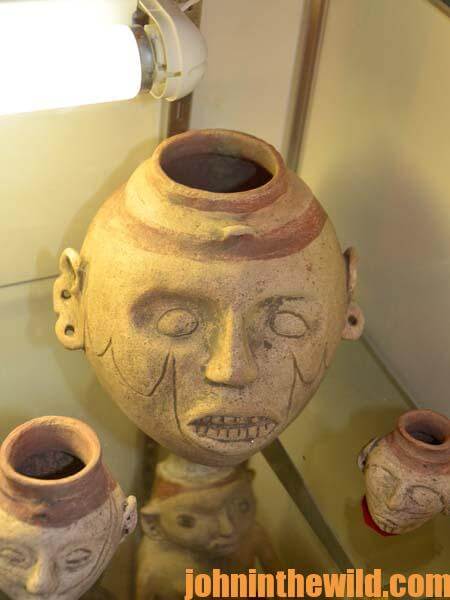 • Bear Claw Necklace http://youtu.be/QeJOshZWLfY
• Bear Claw Necklace http://youtu.be/QeJOshZWLfY
Most visitors to Griffin’s home are fascinated by the bear claw necklace there. According to Griffin, “Most people completely overlook the treasure in this necklace, including a rolled silver ornament and the many semi-precious stones and trade beads. Before white men arrived, and even after fur traders came, bear claws were fairly easy to come by. However, the little rolled silver bead was priceless. I found this necklace still on its original string, some buffalo teeth, earrings, bracelets and carrier pigeon feathers in a dry cave near the Mississippi River.”
• Gorgets (Necklaces) http://youtu.be/DD5zdWDCN9g
These gorgets (necklaces) were worn for ceremonies, rituals and important meetings. One of the gorgets is translucent and made from feldspar, a type of rare material through which you can see. Griffin reports, “This is the only gorget made from feldspar I’ve ever found as long as I’ve been collecting artifacts. Imagining how the Native Americans could get a piece so thin like the gorget on the bottom is hard. There’s a round gorget that looks like a fish, one with a cross and an arrow coming down, another which resembles bar bells, and the last one is a flat long piece.”
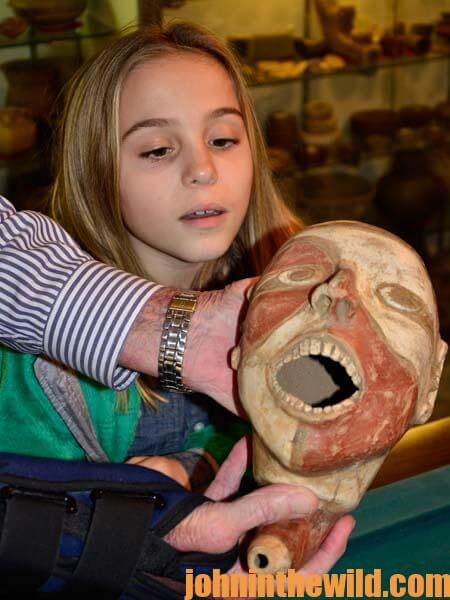 • Atlatls and Points http://youtu.be/sSlx7rdoIm0
• Atlatls and Points http://youtu.be/sSlx7rdoIm0
“These look like arrow heads, and some of them may be atlatl points,” Griffin explains. “These pieces are in the Eva classification, between 3,000 and 8,000 years old. The bottom half of an arrow head or an atlatl point is usually the defining factor to determine the period of time that stone implement was made.”
This case holds a mixture of points all created during the Archaic Period. On the right hand side is a true knife, the big one at the top is called a Benton point, and at the center bottom is a Ledbetter point. On each side are Pickwick points.
The colors of these points, known as Horse Creek Points, are what make them important and much sought after by artifact collectors. The Horse Creek Points come from a creek near Savannah, Tennessee, that runs into the Tennessee River. These rocks that make up these points are native to that area. Usually these points are only found within 40 or 50 miles of Horse Creek or right around Savannah. These rocks are dull-looking gray rock, until the rock is cracked open. Then the inside of the stone lights up like a rainbow of colors.
 • Pine Tree Points http://youtu.be/sSlx7rdoIm0
• Pine Tree Points http://youtu.be/sSlx7rdoIm0
These Pine Tree Points were created sometime between 3,000 BC and 8,000 BC during the Archaic Period. The name pine tree is applied because of their overall shape that looks like an evergreen tree. The smaller points are probably atlatl points. The larger points may have been used for knives. These points become beveled as a result of sharpening knives by chipping away a small portion of the stone knife blade.
Griffin has a point that was originally made by the Pine Tree people. He explains, “Then one of the Kirk people probably found this point and chipped away at the original rock. I dug this piece out of a clay bank. Most people don’t realize how many points and different stone tools were reworked by the early people. But just like we get all excited when an oil painting by an Old Master is cleaned up and restored, these early people also did restoration on many of the points, knives and other stone tools that they found and rehabilitated them to reuse them. Native Americans didn’t waste anything. They found uses for rocks, sticks, bones and anything and everything they discovered in their environment.”

